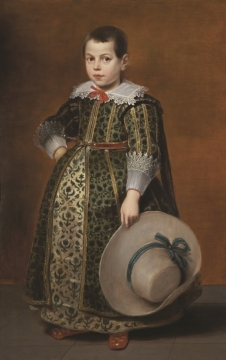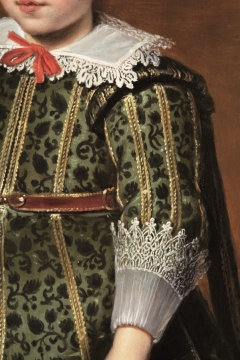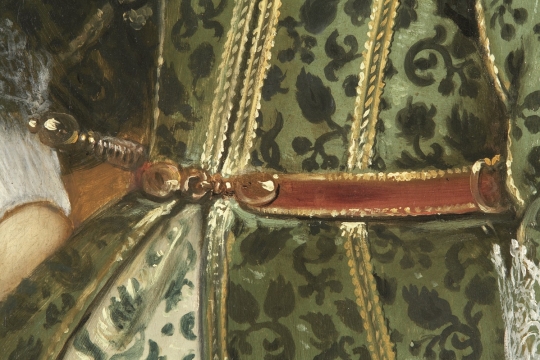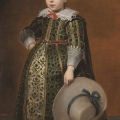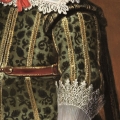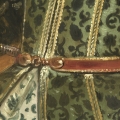It was in 1624 that Joris Vekemans, an Antwerp silk merchant, commissioned Cornelis de Vos (1584/85 -1651), the most renowned Antwerp Baroque portraitist, to paint a series of individual portraits of members of his family. The portraits are considered to be the most elegant of the work created by this eminent painter. Four of the portraits were acquired by Fritz Mayer van den Bergh himself. The fifth, that of Jan, Joris Vekemans’ eldest son, was missing. However, this work was purchased in 2006 by the King Baudouin Foundation’s Heritage Fund, enabling Jan to be reunited with the rest of his family.
This series of paintings invites us to think somewhat differently about the art of portrait painting and to enquire about the significance of the way in which costumes, textiles and accessories were rendered during the 17th century. Cornelis de Vos attached huge importance to the representation of clothes and the fact that the person who commissioned these portraits was a silk merchant certainly influenced him in this respect. The quality of the fabrics, which were also fabrics that De Vos sold, had to be quite obvious. The costumes are luxurious and the lace and fabric are depicted in the most refined manner. The accessories have all been carefully selected: fans, jewels and pearls for the ladies, wide leather belts, swords and hats to underline the virility of the males.
The exhibition and brochure "Les costumes et le textile dans les portraits de la famille Vekemans au 17e siècle" (Costumes and textiles in the 17th century portraits of the Vekemans family) is a joint initiative of the King Baudouin Foundation’s Heritage Fund and the Mayer van den Bergh Museum, in collaboration with Frieda Sorber, Honorary Curator of the ModeMuseum Provincie Antwerpen (Province of Antwerp Fashion Museum). It has been developed as part of the "Kunst Privé in heel Vlaanderen" (Private Art across Flanders), a vtbKultuur initiative promoting work from private institutions and collectors. This particular event takes place on 13 October, but the exhibition itself is open until November 3 at the Mayer van den Bergh Museum.
